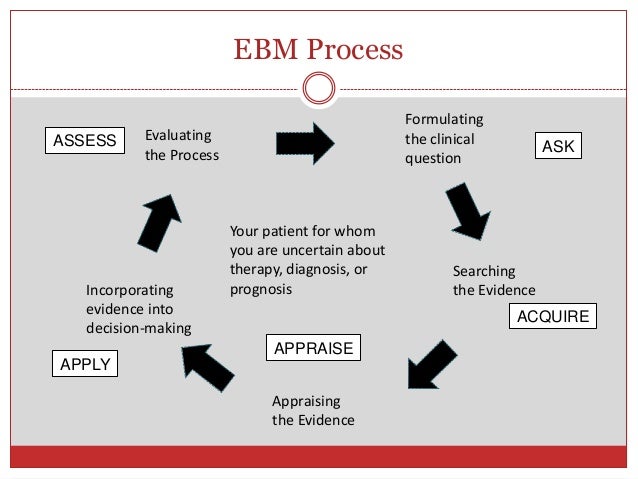
Sackett states,
Evidence-based practice is "the conscientious, explicit and judicious use of current best evidence in making decisions about the care of the individual patient. It means integrating individual clinical expertise with the best available external clinical evidence from systematic research." (as cited in Duke University, 2020) .

Image from: https://guides.mclibrary.duke.edu/ebm/home
Why is EBP Important in Occupational Therapy?
"Implementing evidence in clinical practice is a process of closing the gap between research and practice so that research findings are used more routinely. This process is crucial to promote the efficacy, efficiency, and justification of reimbursement/funding of OT services necessary to maintain our position as a valued member within the future of healthcare" (OT Seeker, n.d.).

The following two sites offer additional overviews for performing the EBP Steps:
Evaluating Resources (Western Libraries, 2012):
CAT's: Occupational Therapy Critically Appraised Topics :
Levels of Evidence Hierarchy
The Oxford Centre for Evidence-Based Medicine 2011 Levels of Evidence provides a ranking system reflecting the quality/rigor of the research and strength of the results, and associated confidence in applying the results into clinical decision-making with OT clients.
Click the following link to watch a short video explaining the levels of evidence:

Image retrieved from https://nursetopia.files.wordpress.com/2011/03/levels-of-evidence1.jpg
Please review the following link for a description of the "Types of Design Types" (American University of Beirut Saab Memorial Medical University Library, n.d.).
Types of Study Designs
Review the following links for a description of study designs included in the Oxford Centre for Evidence-Based Medicine 2011 Levels of Evidence:
Online it is easy to find information on just about every topic, but it is appropriate information to support graduate-level work? To help understand the expectations for appropriate scholarly literature, review the following video and resources:
Evidence-Based Practice Databases
Evidence-Based Practice Search Engines
Evidence-Based Clinical Practice Guidelines
Evidence-Based Practice Glossaries
The following glossaries offer comprehensive reference lists of evidence-based practice terminology: